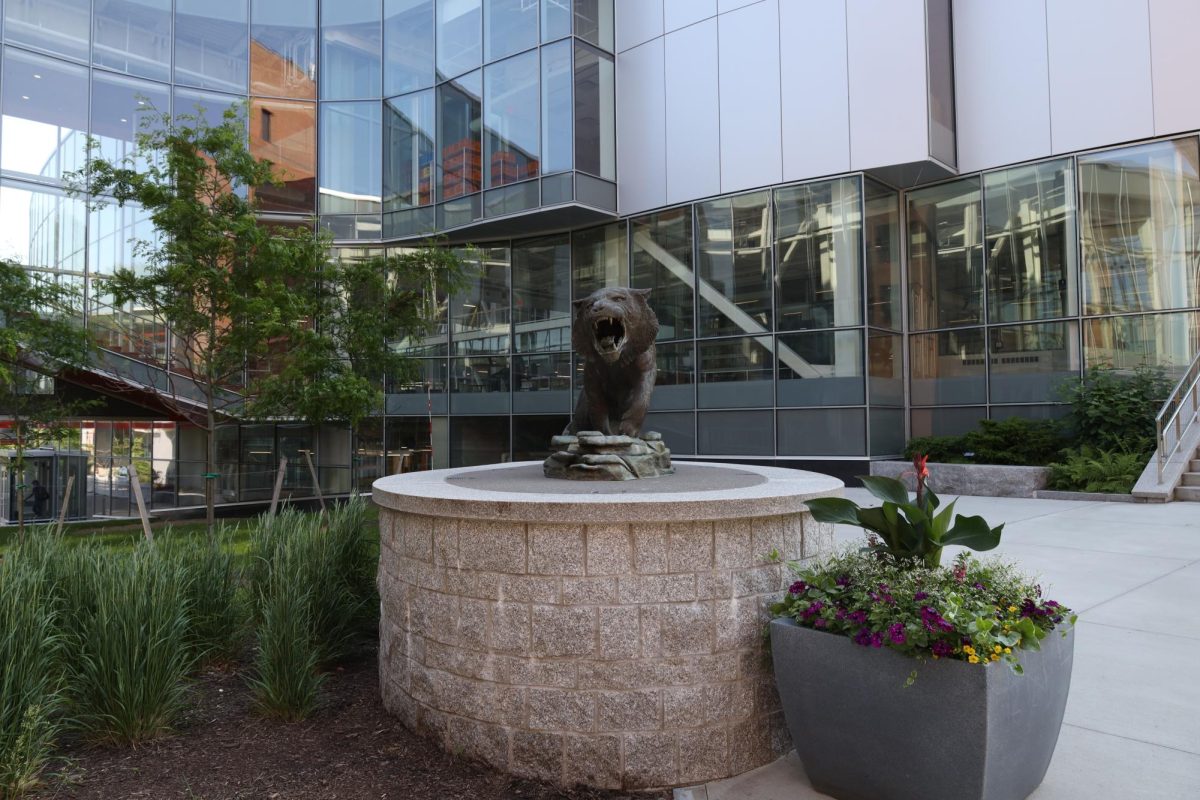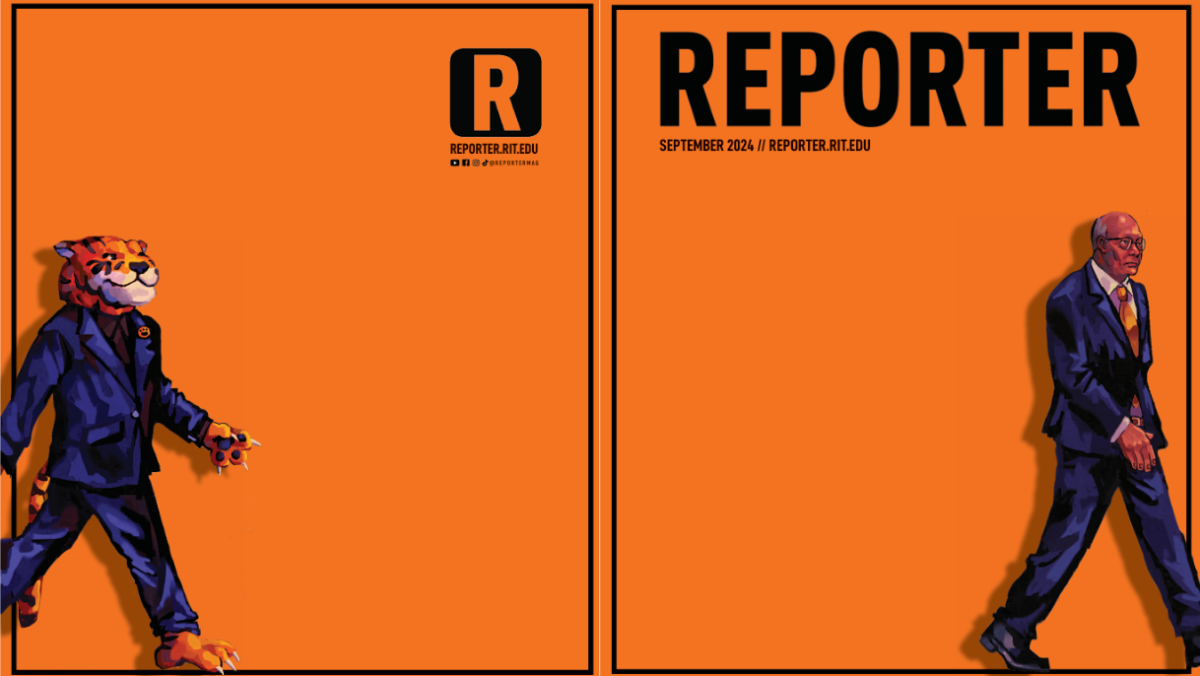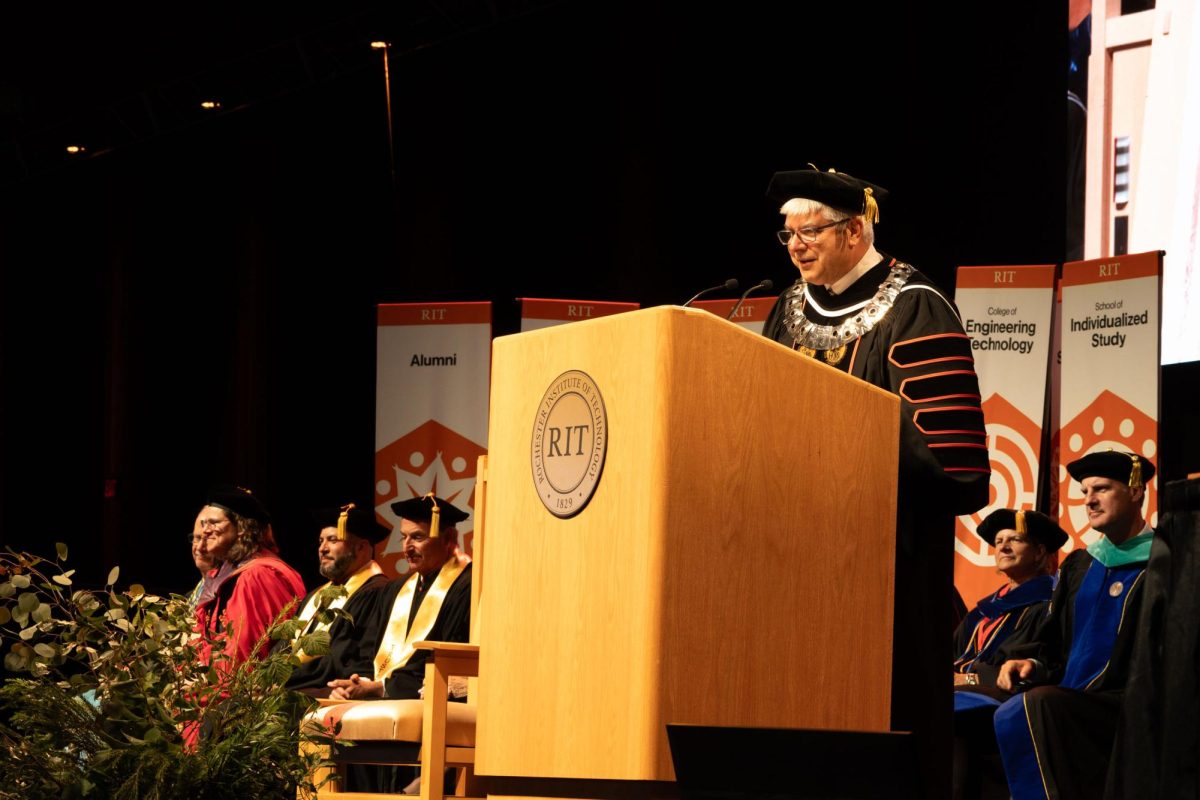This story was originally written and published by the Rochester Beacon as part of the digital publication’s Oasis Project.
As RIT prepares to welcome a new president, the university is grappling with rising costs, shrinking research funds and federal policy changes that could reshape its future.
Early in June, RIT president David Munson issued statements to faculty and staff addressing recent financial pressures and federal actions.
In the first statement, Munson and James Watters, RIT’s senior vice president and treasurer, wrote that “like many institutions, we are navigating a period of significant economic headwinds that require our collective attention and strategic action.” They pointed to “considerable price increases” in areas such as professional services, energy supply, software licenses, health care and transportation services. All told, the higher costs are estimated to exceed $15 million, including price hikes anticipated for the fiscal year.
In response, the university is reducing discretionary spending by canceling events and sponsorships, while also reviewing hiring processes and workflows.
“We are committed to carefully managing our personnel costs, which is the largest single expense category of the university, by filling only the most critical vacant positions,” Munson and Watters wrote.
The institution is undergoing a review of workflow responsibilities to identify opportunities for consolidating duties. These steps represent an attempt to create a balanced operating budget and preserve merit-based salary increases. RIT employees are slated to receive salary increases on Sept. 1, a change made in recent years from the previous date of July 1 to further assess student enrollment.
Compensation costs will be reduced by roughly 2 percent by holding or eliminating currently open positions. The institution notes that opportunities will arise for current staff to adopt responsibilities created from financial strains.
RIT spokesperson Bob Finnerty says these developments reflect the current state of affairs for higher education throughout the U.S. He also notes that William Sanders, the university’s incoming president, has dealt with related matters in his position as Carnegie Mellon University’s dean of engineering.
“The statement really gets to the realities of colleges and universities across the country,” Finnerty says. “Dr. Sanders is facing similar issues in his current position, especially with national policies.”
Sanders will assume the RIT presidency on July 1, marking a new era for the school. He inherits an increasingly uncertain situation and will be forced to navigate continually evolving circumstances.
International student enrollment is of particular concern, Munson told faculty and staff, with the new obstacles for students seeking entry into the U.S. Federal actions and related factors are expected to reduce RIT’s international enrollment by 200 or more from prior years, reducing total international student enrollment by roughly 10 percent. RIT enrolls students from more than 100 countries, with India bringing the most.
The decrease in enrollment, along with the necessary financial aid support that accompanies it, places pressure on tuition revenue. These issues were also outlined in Munson’s second statement, sent on June 5.
Recent federal government actions have created myriad challenges for RIT and numerous higher education institutions nationally. The decline in new international student enrollment and uncertainties in acquiring and maintaining visas is expected to impact schools beyond their budget, disrupting campus culture.
As a result of federal bans on “unlawful DEI programs,” RIT is making modest changes to its DEI-related initiatives, despite its firm belief that each of its programs is legal, according to the statement. Changes include renaming the Division of Diversity and Inclusion, adjusting staff titles and program names, removing the required faculty diversity statement, and making the online diversity module optional.
Two dozen federal research awards have also been canceled at the school, with some reinstated later. Munson stated that such unpredictability has caused significant disruption for faculty, staff and students involved. In addition, a proposed 15 percent cap on indirect research costs—currently blocked by courts—could significantly impact RIT’s ability to fund research.
The proposed fiscal year 2026 federal budget forecasts major funding cuts to a variety of independent, research-oriented agencies, such as the National Institutes of Health and National Science Foundation. If enacted, these measures could reduce the research programs at RIT and many other universities while adjusting promotion and tenure standards, particularly in STEM fields.
During the Transforming RIT campaign, which brought in over $1 billion, more than half of the funds RIT raised from research and government sources came from federal government agencies. The school received nearly $103 million in sponsored research awards during fiscal year 2024, a figure now at risk.
In spite of these challenges, Munson expressed hope for a return to a more supportive federal partnership with higher education.
“Though we can’t predict the future, I remain hopeful that the federal government will return to the historic partnership that has existed with higher education, attracting extraordinary talent into our nation from overseas and building an unrivaled science and technology enterprise,” he wrote. “This is the recipe that has produced the most vibrant economy and strongest national defense in the world.”
RIT asserts these financial and federal challenges are being approached proactively. The university has stated it will continue to uphold its educational mission and keep faculty informed as developments occur.
“We draw a hard line in protecting freedom of speech, freedom of peaceful assembly, and academic freedom,” the June 5 memo states.









